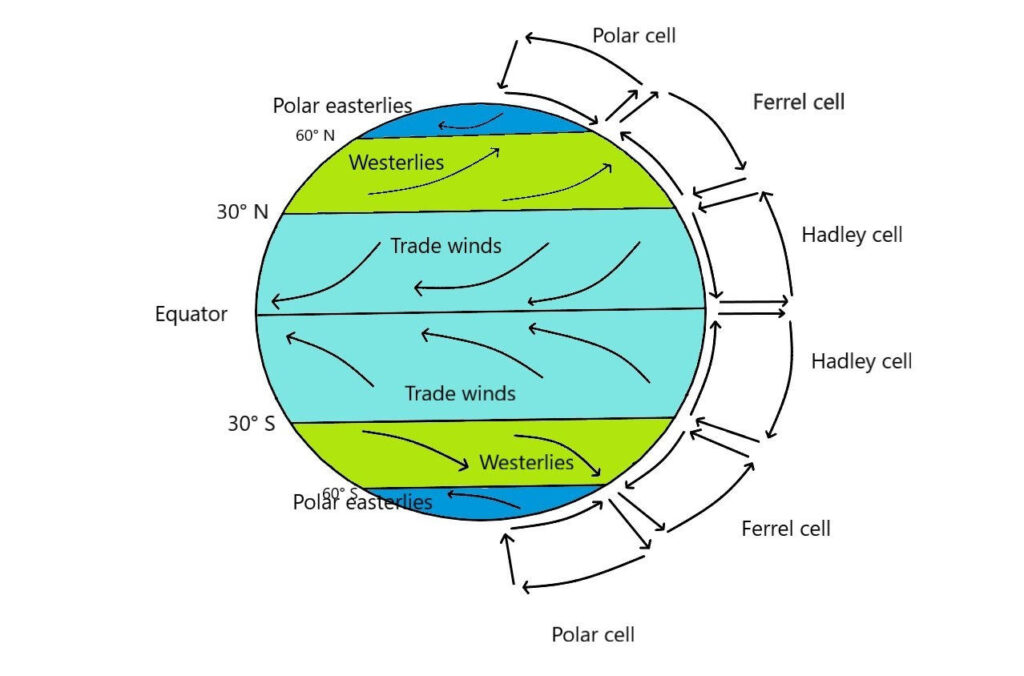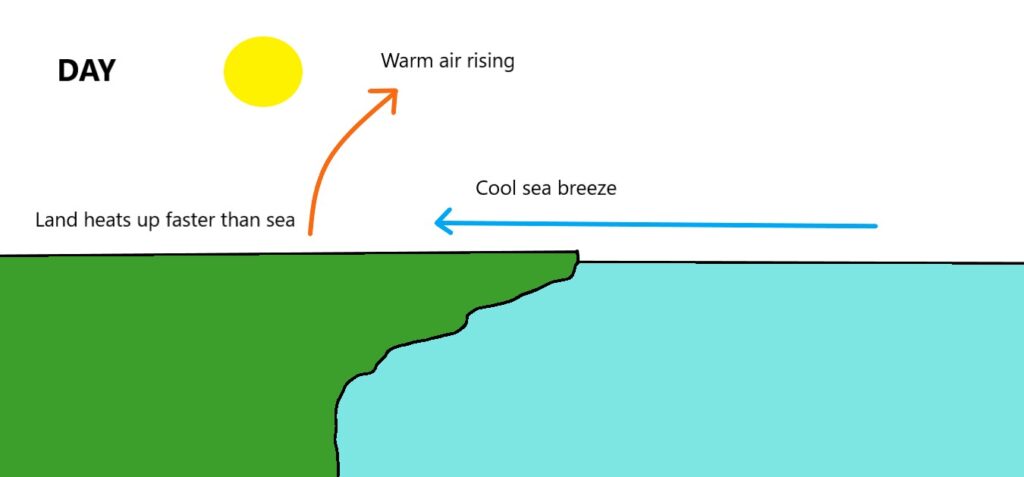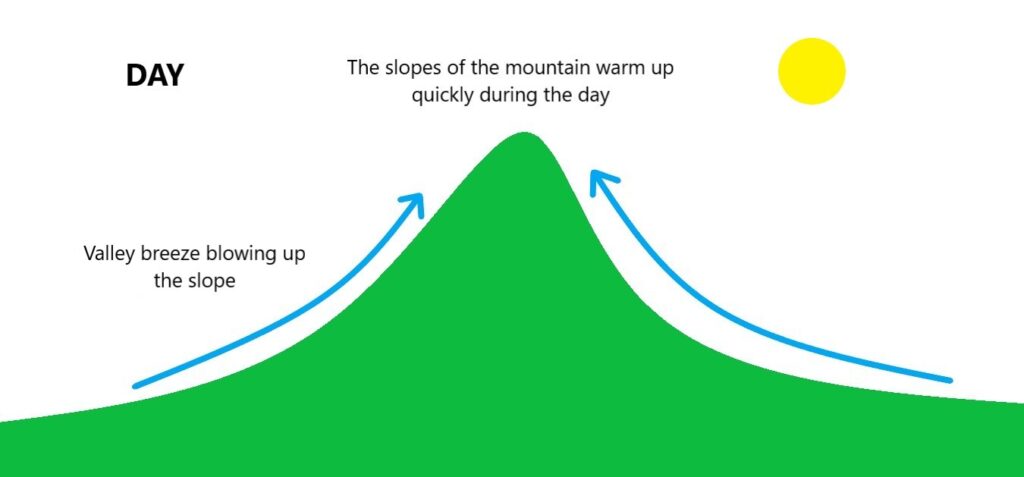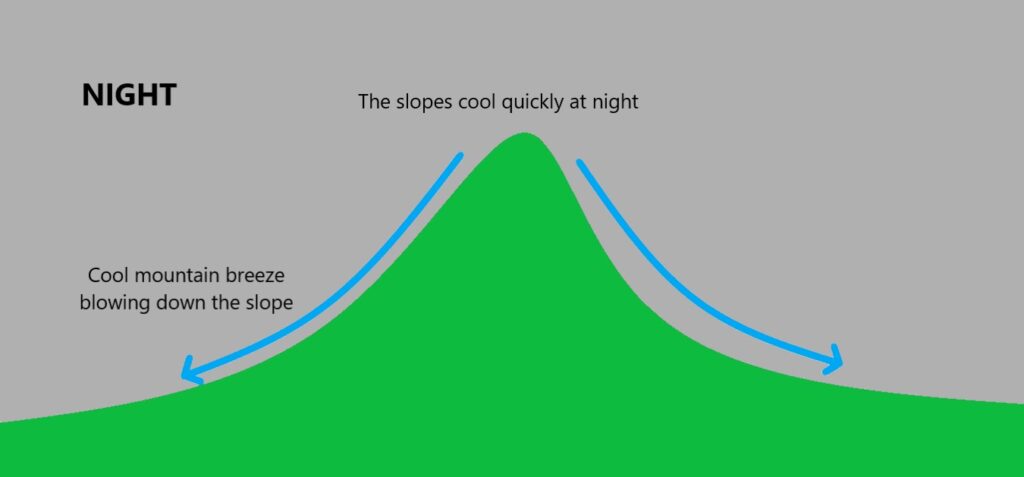The wind is the movement of atmospheric air at the ground level. This movement of air occurs because of the changes in atmospheric pressure and/or the motion of the Earth. In this article, we will learn about the different types of winds. Let’s read.
Types of winds
There are three types of winds:
- Prevailing or Primary winds
- Periodic or secondary winds
- Local or tertiary winds
Prerequisite knowledge
- Air moves from an area of high pressure to an area of low pressure.
- Because of the imaginary Coriolis force, if an object moves up or down the latitude without being attached to the ground, it will always end up right of the desired destination.
- Atmospheric circulation
1. Prevailing winds
These are the winds that are permanent. Prevailing winds move both because of the motion of the Earth and the changes in atmospheric pressure. These winds are further classified as:
- Trade winds
- Westerlies
- Polar easterlies
Trade winds
Air circulates in the atmosphere in three distinct cells: Hadley cell, Ferrel cell, and Polar cell. In Hadley cell, the air moves from about 30° latitude to the equator in both hemispheres at ground level.
As this air moves towards the equator, the imaginary Coriolis force acts on it, making it move towards the west (right). This west-moving air is termed as trade wind.
In the Northern Hemisphere, trade winds are known as northeastern trade winds as they appear to move from the northeast. In the Southern Hemisphere, trade winds are known as southeastern trade winds.
Westerlies
These winds blow between 30°-60° latitude in the Ferrel cell. In the Ferrel cell, air on the ground moves towards the poles. Due to the Coriolis force, the air mass moves to the east (right), causing westerlies.
Polar easterlies
These winds blow between 60° latitudes and the poles. Polar easterlies move from east to west. In the Polar cell, the air mass moves from the poles to the 60° latitudes at ground level. Again, due to the Coriolis force, this air is deflected towards the west (right), causing polar easterlies.

2. Periodic winds
These winds as the name suggests are periodic i.e. they blow at a specific time of the year. The best example of periodic wind is the monsoon wind.
Indian summer monsoon winds (Southwest monsoon)
The Indian summer monsoon winds are periodic winds that cause widespread rains in the Indian subcontinent. These monsoon winds move from the southwest Indian ocean to the Indian landmass in the summers and reverse their direction in the winters.
3. Local winds
These winds blow because of the local changes in pressure. Land breeze, sea breeze, mountain breeze, and valley breeze are examples of local winds.
(Also read: Types of clouds | Cirrus, Cirrocumulus, Cirrostratus, etc.)
Land breeze and Sea breeze
In coastal areas, during the day the land heats up faster than the sea. The air above the land warms up and rises, creating a low-pressure area. The colder air above the sea rushes to the land causing a sea breeze.
During the night, on the other hand, the sea is warmer as the land cools faster. As a result, a breeze blows from land to the sea known as a land breeze.


Mountain and valley breeze
In the mountains, during the day, the slopes are warmer and valleys are colder. A breeze flows up the slope known as the valley breeze. During the night, slopes cool faster. Hence, the breeze flows down the slope known as the mountain breeze.


Read more
simplified..